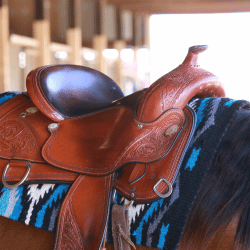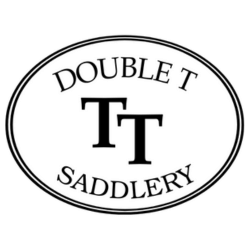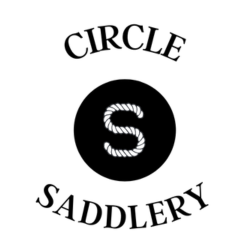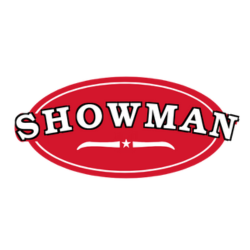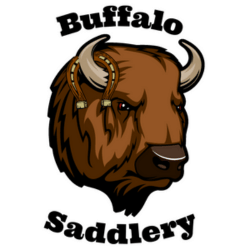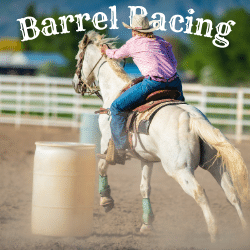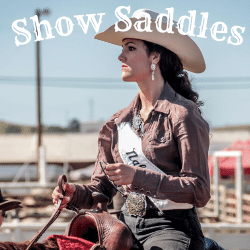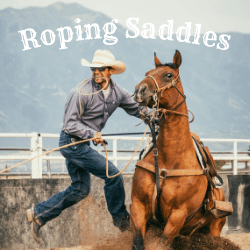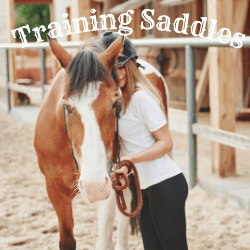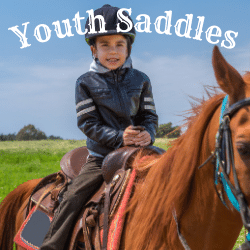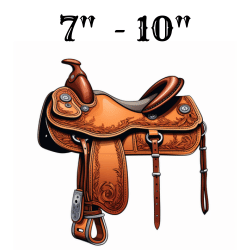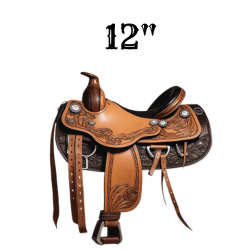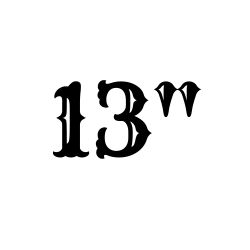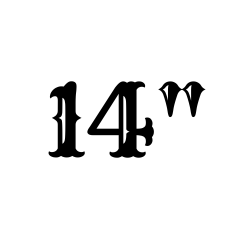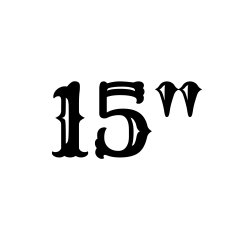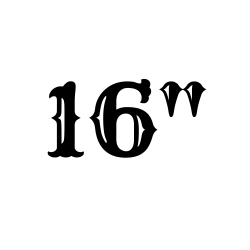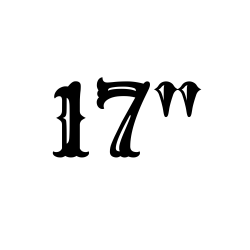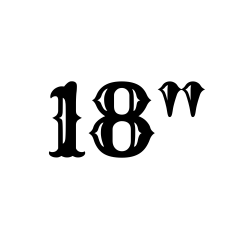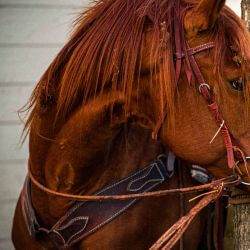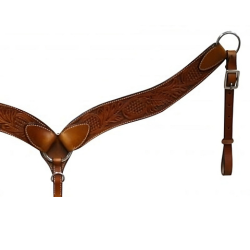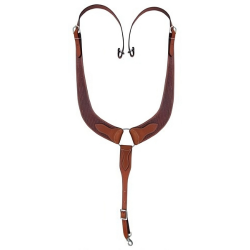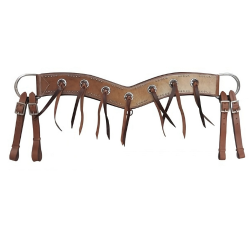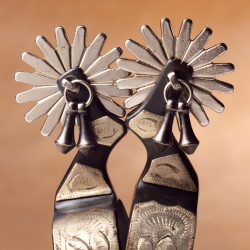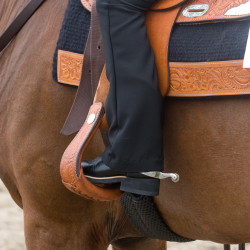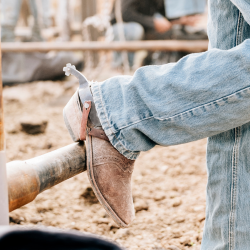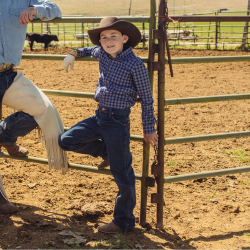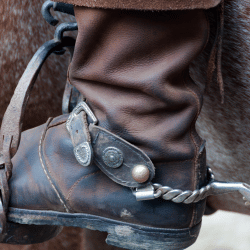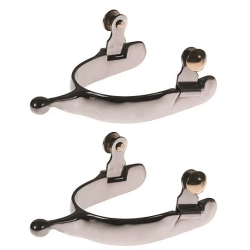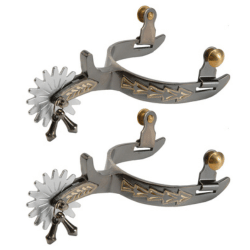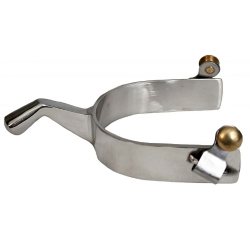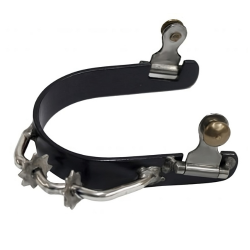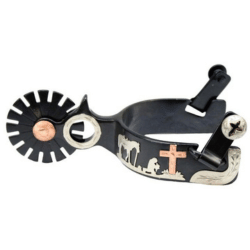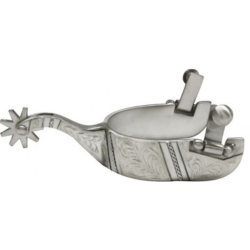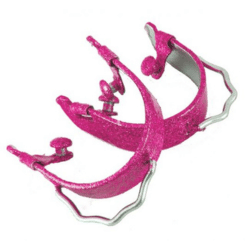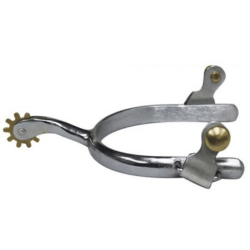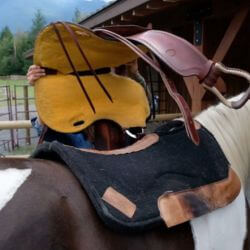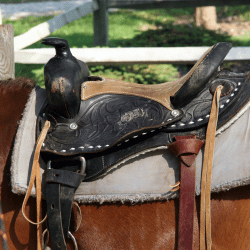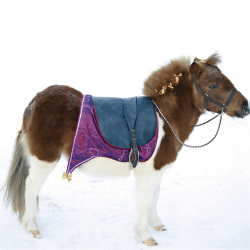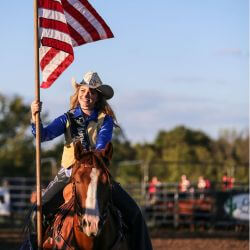If you're a horse owner or rider, you know that proper equipment is essential for the comfort and safety of both you and your horse. One piece of equipment that often goes overlooked, but is crucial for certain disciplines, is the English breast collar. Whether you're a seasoned equestrian or a beginner, understanding and using the English breast collar correctly can greatly enhance your horse's performance and overall well-being.
In this blog post, we will delve into the world of the English breast collar, exploring its various types, how to properly fit it on your horse, and the maintenance and care required to keep it in top condition. Additionally, we will discuss the benefits of using an English breast collar, as well as any potential drawbacks and how to mitigate them.
So, whether you're a hunter, eventer, or just looking to expand your knowledge on horse equipment, join us as we explore the ins and outs of the English breast collar and discover how it can benefit both you and your horse. Let's saddle up and dive in!
Understanding the Basics: What is an English Breast Collar?
An English breast collar is a piece of horse equipment that is designed to help secure the saddle in place and prevent it from sliding backward during riding. It consists of a strap or multiple straps that go around the horse's chest and attach to the saddle's girth or billets. The purpose of the breast collar is to distribute the pressure evenly across the horse's chest, providing stability and preventing the saddle from shifting.
Unlike a traditional breastplate, which covers the horse's shoulders and attaches to the saddle's D-rings, an English breast collar is typically narrower and focuses on securing the front of the saddle. It is commonly used in disciplines such as show jumping, eventing, and fox hunting, where the horse's movement and balance are crucial.
The English breast collar is available in various designs and materials, including leather and synthetic materials. Some breast collars may also feature additional padding or elastic inserts for added comfort and flexibility.
Overall, the English breast collar serves an important function in ensuring the safety and stability of the saddle, allowing both horse and rider to perform at their best. In the following sections, we will explore the different types of English breast collars, how to properly fit them on your horse, and the maintenance required to keep them in optimal condition.
Different Types of English Breast Collars
When it comes to English breast collars, there are several different types available, each designed to cater to specific riding disciplines and individual horse needs. Understanding the various types can help you choose the most suitable option for your horse. Let's explore some of the common types of English breast collars:
1. Hunting Breastplate
The hunting breastplate, also known as a "standing martingale," is a type of English breast collar commonly used in fox hunting and cross-country riding. It consists of a central strap that runs from the horse's chest, between the front legs, and attaches to the girth. Two additional straps extend from the central strap and attach to the saddle's D-rings.
The purpose of the hunting breastplate is to prevent the saddle from slipping back during fast-paced riding or jumping. It also helps to stabilize the horse's head position by limiting the upward movement of the neck. The hunting breastplate is typically made of leather and may feature adjustable buckles to ensure a proper fit.
2. Five-Point Breastplate
The five-point breastplate, also known as a "Y-shaped breastplate," is a popular choice in eventing, show jumping, and cross-country riding. It offers additional stability and security by attaching to multiple points on the saddle and girth.
This type of breastplate consists of a central strap that runs along the horse's chest, between the front legs, and attaches to the girth. Two additional straps extend from the central strap and attach to the saddle's D-rings, while two more straps connect to the billets or girth at the sides. The five-point breastplate distributes pressure evenly across the horse's chest and shoulders, reducing the risk of saddle slippage.
3. Three-Point Breastplate
The three-point breastplate is a simplified version of the five-point breastplate. It features a central strap that runs from the horse's chest, between the front legs, and attaches to the girth. Two additional straps extend from the central strap and attach to the saddle's D-rings.
The three-point breastplate provides stability and helps to prevent the saddle from sliding back, particularly during jumping or galloping. It is commonly used in show jumping, dressage, and general riding. The straps are adjustable, allowing for a customized fit for different horse sizes and conformations.
4. Eventing Breastplate
The eventing breastplate, also known as a "combined training breastplate," is specifically designed for eventing, which combines dressage, cross-country, and show jumping. It offers a combination of functionality and flexibility.
This type of breastplate typically features a central strap that runs along the horse's chest, between the front legs, and attaches to the girth. It may also include additional straps that connect to the saddle's D-rings or billets. The eventing breastplate allows freedom of movement for the horse's shoulders while providing stability and preventing the saddle from slipping back.
Each type of English breast collar serves a specific purpose and is suited for different riding disciplines. Consider your horse's needs, the discipline you participate in, and consult with a knowledgeable equestrian professional to determine the most suitable type of breast collar for your horse. In the next section, we will explore how to properly fit an English breast collar on your horse to ensure comfort and effectiveness.
How to Properly Fit an English Breast Collar on Your Horse
Properly fitting an English breast collar on your horse is crucial for ensuring both their comfort and the effectiveness of the equipment. A well-fitted breast collar will provide stability without restricting the horse's movement or causing discomfort. Here are the key steps to fitting an English breast collar correctly:
1. Measurements Required for a Proper Fit
Before fitting the breast collar, you'll need to take a few measurements to ensure the right size. Use a flexible measuring tape to measure the following:
- Chest Circumference: Measure around the widest part of the horse's chest, just behind the front legs.
- Girth Length: Measure the distance from the girth billets on one side of the saddle, underneath the horse's belly, to the girth billets on the other side.
These measurements will help you determine the appropriate size breast collar for your horse.
2. Adjusting the Straps
Once you have the correct size breast collar, you'll need to adjust the straps to fit your horse's chest properly. Follow these steps:
- Central Strap: Begin by attaching the central strap of the breast collar to the girth or cinch. Ensure that it is snug but not overly tight, allowing enough room for the horse to move comfortably.
- Side Straps: Adjust the side straps so that they extend from the central strap to the saddle's D-rings or billets. These straps should form a straight line from the chest to the saddle, without pulling or causing any restriction.
- Buckles and Buckle Holes: Check that the buckles are securely fastened and that the breast collar is properly centered on the horse's chest. Ensure that there are enough buckle holes available for adjustments in case the horse's size or shape changes.
Remember, it's essential to regularly check the fit of the breast collar, especially as the horse's body condition changes due to growth, weight gain, or muscle development.
3. Ensuring Comfort and Movement Freedom for the Horse
While the breast collar should provide stability, it should not interfere with the horse's movement or cause discomfort. Here are a few additional considerations:
- Shoulder Freedom: Make sure that the breast collar does not restrict the horse's shoulder movement. It should sit just above the point of the shoulder, allowing the horse to move freely and extend their front legs without any restriction.
- No Pinching or Rubbing: Check for any signs of pinching or rubbing on the horse's chest or shoulders. Ensure that the breast collar is properly padded and that all edges are smooth to prevent discomfort or chafing.
- Proper Positioning: Verify that the breast collar is positioned correctly. It should sit snugly against the horse's chest without being too tight or too loose. It should not slide back towards the throat latch or pull forward towards the horse's throat.
Taking the time to properly fit the English breast collar on your horse is essential for their comfort and safety. It's always a good idea to seek guidance from an experienced equestrian or saddle fitter if you are unsure about the fit or need assistance. In the next section, we will discuss the maintenance and care required to keep your English breast collar in top condition.
Maintenance and Care for Your English Breast Collar
Proper maintenance and care are essential for keeping your English breast collar in optimal condition. Regular cleaning, inspection, and storage practices can help prolong its lifespan and ensure its effectiveness. Here are some guidelines to follow for maintaining and caring for your English breast collar:
1. Regular Cleaning and Inspection
- Cleaning: After each use, wipe down the breast collar with a damp cloth to remove dirt, sweat, and debris. Use a mild soap or leather cleaner if necessary, following the manufacturer's instructions. Be sure to clean all the straps and buckles thoroughly.
- Drying: Allow the breast collar to air dry completely before storing it. Avoid exposing it to direct sunlight or using artificial heat sources, as this can damage the leather or cause it to become stiff.
- Inspection: Regularly inspect the breast collar for any signs of wear, damage, or loose stitching. Check the buckles, straps, and attachments to ensure they are secure and in good condition. Pay attention to areas that experience high tension or rubbing, as these may require additional care or replacement.
2. Proper Storage to Maintain Quality
- Clean and Dry: Before storing the breast collar, ensure that it is clean and completely dry. Lingering moisture can lead to mold or mildew growth and can damage the leather over time.
- Avoid Extreme Conditions: Store the breast collar in a cool, dry place, away from direct sunlight and extreme temperature fluctuations. Excessive heat or cold can cause the leather to crack or warp.
- Avoid Sharp Objects: Keep the breast collar away from sharp objects or surfaces that can scratch or puncture the leather.
- Proper Hanging or Folding: Depending on the design and material of your breast collar, it can be hung or folded for storage. If hanging, use a sturdy hanger or peg that can support the weight of the breast collar without causing deformation. If folding, ensure that it is done gently and without excessive pressure on any particular area.
3. Replacement of Worn Out Parts
Over time, certain parts of the breast collar may wear out or become damaged. It's important to address these issues promptly to maintain the safety and effectiveness of the equipment. Consider the following:
- Buckles and Straps: If the buckles become worn, rusty, or damaged, it is advisable to replace them. Similarly, if the straps show signs of excessive wear, fraying, or stretching, it may be necessary to have them replaced by a professional saddler or leatherworker.
- Padding and Inserts: If your breast collar has padding or elastic inserts, regularly check their condition. If they become worn, lose their elasticity, or show signs of damage, consider replacing them to ensure the comfort and effectiveness of the breast collar.
By following these maintenance and care practices, you can help prolong the lifespan of your English breast collar and ensure that it remains in good working condition. In the next section, we will explore the benefits of using an English breast collar for your horse, as well as any potential drawbacks and how to mitigate them.
Benefits and Drawbacks of Using an English Breast Collar
Using an English breast collar can offer several benefits for both the horse and the rider. However, it's important to consider any potential drawbacks and how to mitigate them. Let's explore the benefits and drawbacks of using an English breast collar:
Benefits of Using an English Breast Collar
-
Saddle Stability: One of the primary benefits of an English breast collar is that it helps to stabilize the saddle. It prevents it from sliding back during fast-paced riding, jumping, or when riding on uneven terrain. This stability enhances the rider's balance and helps maintain a secure seat.
-
Improved Horse Comfort: The even distribution of pressure across the horse's chest provided by the breast collar can enhance the horse's comfort during riding. It helps prevent the saddle from putting excessive pressure on specific areas, reducing the risk of discomfort or soreness.
-
Enhanced Safety: By preventing saddle slippage, an English breast collar contributes to the overall safety of both horse and rider. It minimizes the risk of accidents caused by an unstable saddle, ensuring a safer riding experience.
-
Discipline-specific Use: English breast collars are designed with specific disciplines in mind. Different types of breast collars cater to the requirements of various disciplines such as show jumping, eventing, and fox hunting. Using the appropriate breast collar for your discipline ensures optimal performance and functionality.
Potential Drawbacks and How to Mitigate Them
-
Restricted Shoulder Movement: If improperly fitted or adjusted, an English breast collar can restrict the horse's shoulder movement. It's crucial to ensure that the breast collar doesn't impede the natural range of motion of the horse's front legs. Regularly check for proper fit and adjust as necessary to mitigate this issue.
-
Potential for Rubbing or Chafing: If the breast collar is made of poor-quality materials or lacks proper padding, it may cause rubbing or chafing on the horse's chest or shoulders. Choosing a well-padded breast collar and regularly inspecting for signs of discomfort can help prevent this issue.
-
Fit and Adjustment Challenges: Achieving the correct fit and adjustment of an English breast collar can be challenging, especially for inexperienced riders. Seek guidance from an experienced equestrian or saddle fitter to ensure proper fit and adjustment, and regularly check for any changes needed as your horse's shape or size changes.
-
Not Suitable for All Horses: While an English breast collar can be beneficial for many horses, it may not be necessary or suitable for all. Some horses naturally have a conformation that keeps the saddle in place without the need for a breast collar. Assess your horse's individual needs and consult with professionals to determine if an English breast collar is appropriate.
By considering these benefits and potential drawbacks, you can make an informed decision about whether using an English breast collar is suitable for your horse and riding discipline. Remember to prioritize proper fit, regular maintenance, and seeking professional guidance when needed.

